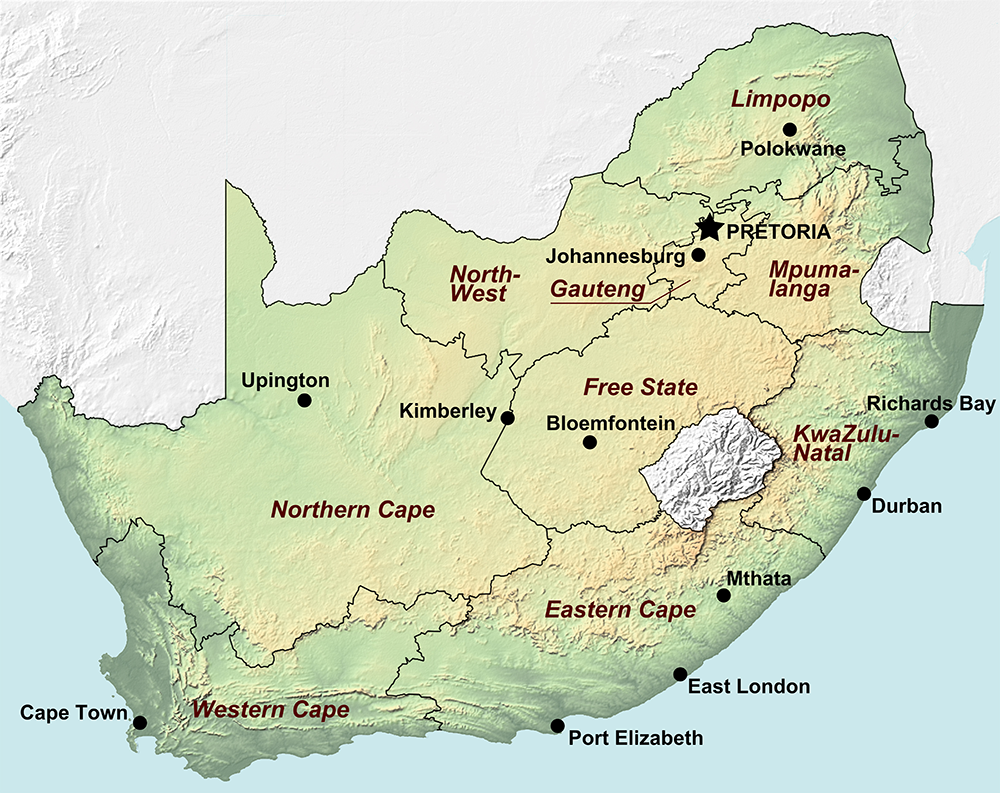Republic of South Africa
The complex political and historical record of this ethnically diverse country is generally divided into: pre-colonial era, the colonial era, the post-colonial and apartheid eras, and the post-apartheid era, characterized by clashes of culture, violent territorial disputes between European settlers and indigenous people, dispossession and repression, and other racial and political tensions.
On 27th of April 1994, after decades of armed struggle and international opposition to apartheid, the country achieved true democracy in which all races could vote.
In the 20 years since South Africa underwent a peaceful transition from apartheid to a constitutional democracy, considerable social progress has been made toward reversing the discriminatory practices that pervaded all aspects of life before 1994.
South Africa's Health Systems Challenges
South Africa, envisions a long and health life for all South African
In order to realize its mission to improve health status through the prevention of illness, disease and promotion of healthy lifestyles, and to consistently improve the healthcare delivery system by focusing on access, equity, efficiency quality and sustainability – South Africa has invested enormously in developing guiding documents, legislative, legal and strategic frameworks, policies and plans.
However, South Africa still spends 8.8% of its GDP on healthcare, just over R4 trillion, which placed it in the midsection of the 19 countries.
South Africa’s health challenges predominantly related to structural and social determinants
South Africa continues to be home for the world’s largest number of people living with HIV, estimated to be 6.4 million. HIV prevalence remained 17.3% since 2005
Ranks third among the countries with the highest burden of disease.
Under-5 mortality rate has decreased from 56 deaths per 1,000 live births in 2009 to 42
Infant Mortality Rate has decreased from 40 deaths per 1,000 liv births in 2009 to 30
Neonatal Mortality Rate remained stable 14 deaths per 1,000 live births
South Africa has an injury death rate of 158 per 100,000 – which is twice the global average 86.9 (intentional injury deaths: 46% and road traffic injuries 26%)
Non-Communicable Disease contribute at least 33% to the burden of disease – with massive 29% exposed to environmental tobacco smoke or secondary smoking
Strategic Goals and Priorities
The Depart of Health has set the following strategic goals/priorities:
Prevent disease and reduce its burden, and promote health
Make progress towards universal health coverage through the development of the National Health Insurance scheme, and improve readiness of health facilities for its implement
Re-engineer primary healthcare by: increasing. The number of ward-based outreach teams, contracting general practitioners, and district specialist teams; and expanding school health services.
Improve health facility planning by implementing norms and standards
Improve financial management by improving capacity, contract management, revenue collection and supply chain management reforms
Develop an efficient health management information system for improved decision making
Improve the quality of care by setting and monitoring national norms and standards, improving systems for user feedback, increasing safety in health care, and by improving clinical governance
Improve human resources for health by ensuring adequate training and accountability measures
We aspire to complement the DOHs efforts by working in the resource constrained setting in the areas with highest disease burden such Eastern Cape


